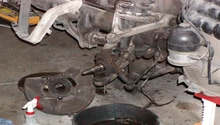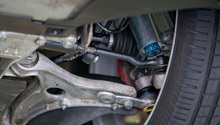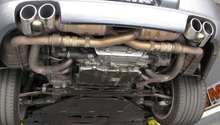Porsche 928: Why is My Suspension Noisy?
A Porsche 928 doesn't feel like a Porsche if you have noises coming out of your suspension.
This article applies to the Porsche 928 (1978-1995).
Whether it's a creak, rattle, bang, or thump, noisy suspensions typically indicate worn or broken parts that are in need of replacement or repair. Since there are so many different components in a car's front end, it can be difficult to find the root cause of the problem. We're going to go over some common noises and what typically causes them, as well as guide you through some diagnostic procedures. Keep reading to learn how to silence that noise once and for all.
Step 1 – Check the shocks/struts
If you hear squeaky noises while going over bumps or around corners, you might have worn shocks or struts. Other symptoms include excessive bouncing while driving over bumps or dips, nose dives or rear end squatting while accelerating or braking, tire cupping or scalloping, or leaking fluid. To check your shocks/struts, push down on each corner of the car on top of where the wheel is located. If the car comes back up slowly, your shocks are fine. If it bounces multiple times, it's time for some new shocks or struts.
(Related Article: How to Install Shock Absorbers - Rennlist.com)
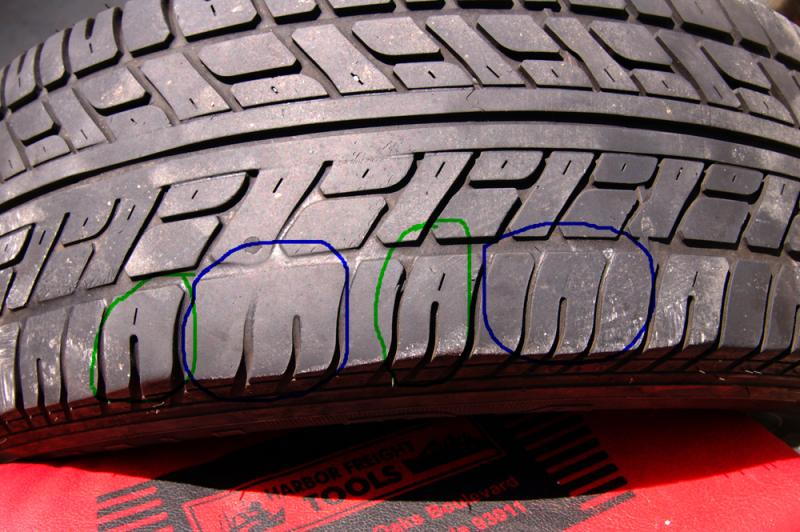
Step 2 – Check the ball joints
Ball joints often go bad slowly, beginning with a slight tap when you turn the wheel and progressing to a loud banging or popping noise. While driving over speed bumps or dips in the road or even turning left or right, you will hear a thud, clunk, or bang. The car's steering will begin to feel vague and wandering, the car will begin pulling to one side, and it may even dart to one side in a spastic manner. The front wheels will also begin to toe out and lead to uneven tire wear. To check your ball joints, jack the car up and place it on jack stands. Grab one tire at the top and bottom and try to rock it. If there is noticeable movement or if you hear noises while doing so, it's time to replace your ball joints.
(Related Article: How to Replace Front Suspension Ball Joints - Rennlist.com)

Step 3 – Check control arm bushings
If you feel a vibration through the car's steering that becomes worse the faster you go, the wheel shakes when you brake, or you hear a clunk or rattle while driving around corners, you might have bad control arm bushings. Bad bushings can also make the steering feel loose and imprecise or cause the car to wander back and forth even while driving in a straight line. To check, jack the car up and place it on jack stands. Check one wheel at a time by trying to move the wheel around with a hand on each end. If the wheel and/or suspension moves easily, the control arms or bushings might be bad.
(Related Article: How to Jack Up Your 928 - Rennlist.com)
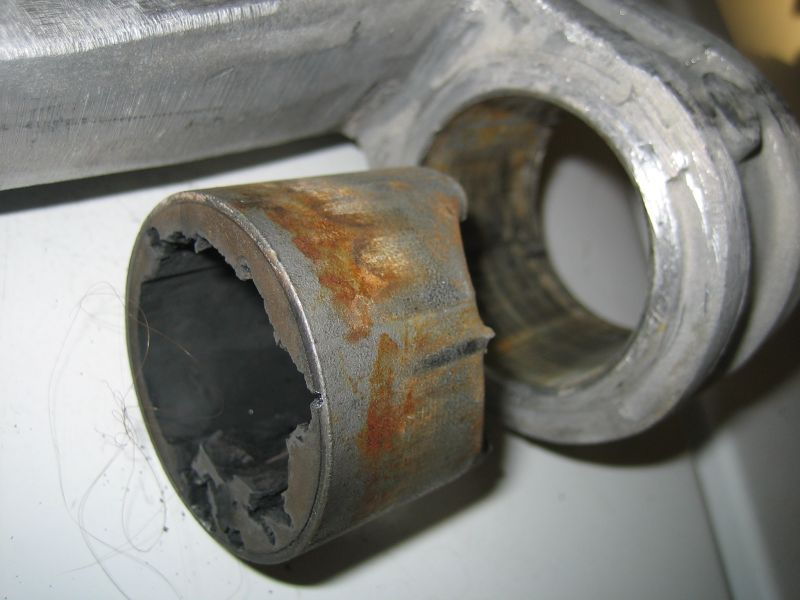
Step 4 – Check the wheel bearings
Bad wheel bearings will often cause a snapping, clicking, or popping noise when cornering or making a sharp turn. You may also hear grinding when the car is moving, a humming, rumbling, or growling when turning, or feel vibrations in the steering wheel. To check your wheel bearings, jack up the car and place it on jack stands. Grab each wheel at the top and the bottom and attempt to rock it. Excessive movement can indicate a bad wheel bearing. Try placing the transmission in neutral (or take it out of gear) and rotate the wheel. Listen for any unusual noises or rough feeling as you turn it.
(Related Article: How to Replace Wheel Hub Bearings - Rennlist.com)

Related Discussions
- Front Wheel Clunk Solved - Rennlist.com
- Clunking Sound while Accelerating or Braking - Rennlist.com
- Wheel Bearing Noise Mystery - Rennlist.com

